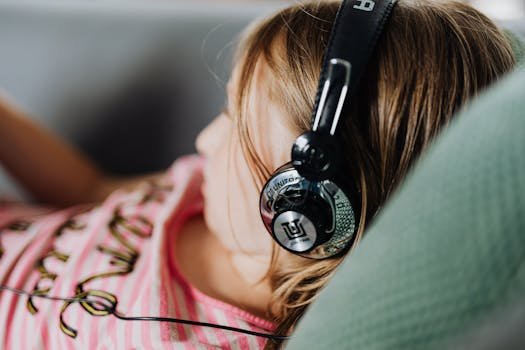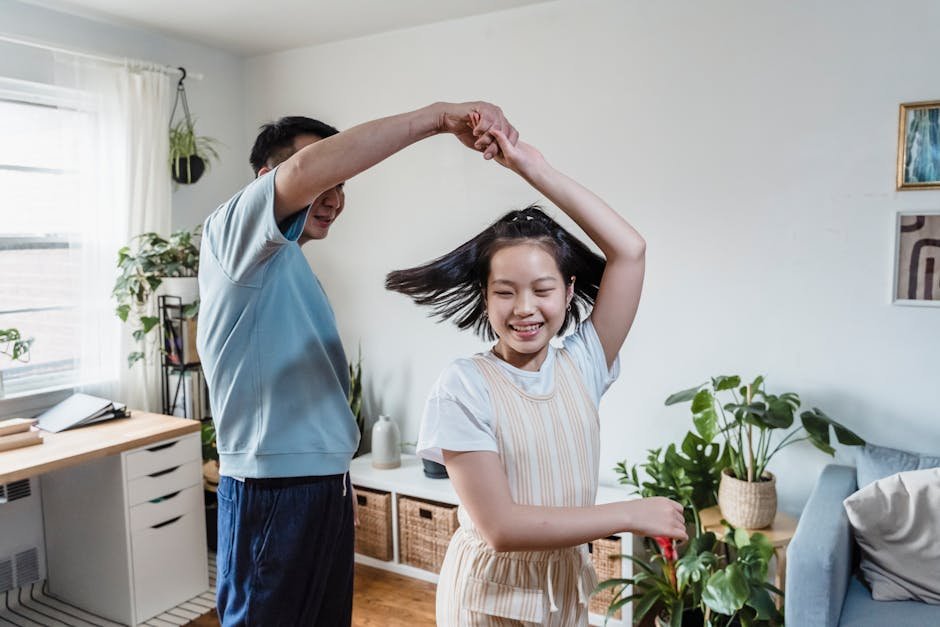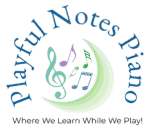When parents think about piano lessons, it’s easy to focus on practice time and progress at the keyboard—but there’s another powerful way to help your child grow as a musician that doesn’t involve a single finger on the keys: listening to music.
One of the most effective ways to develop musicality in young students is by fostering music appreciation for kids at home. Why? Because it’s hard to be inspired to make music when you aren’t surrounded by it. When children regularly hear and experience music, they begin to develop an ear for rhythm, melody, style, and expression—key elements of playing with true musicality.


🎵 Exposure Inspires Expression
Think of it this way: it’s difficult for kids to want to play music if they’ve never been inspired by music. By surrounding your child with a variety of musical sounds, you’re planting the seeds of musical curiosity and creativity.
If your family naturally listens to a wide range of music, you’re already on the right track! Keep doing what you’re doing. But if music isn’t something that’s always playing in the background, you might consider building a new habit.
It doesn’t have to be complicated. Here are a few simple ways to nurture music appreciation for kids:
- Play the radio in the car
- Turn on instrumental music during homework time
- Put on fun music while cooking dinner
- Make a weekend “family playlist” for everyone to enjoy
These small moments of passive listening help children absorb sounds, styles, and rhythms that they may later want to express at the piano.
🎹 Listening Fuels Creativity in Lessons
If your child’s piano teacher incorporates improvisation or composition like I do at Playful Notes Piano (👋 hi there!), listening becomes even more important. Students who have a broader musical vocabulary—thanks to regular exposure to music—often find it easier to explore creative musical ideas. They’ve heard interesting melodies and rhythms, so when it’s their turn to create, they have something to draw from.
Helping your child develop music appreciation will make those creative lesson moments more natural, and more fun, rather than intimidating.
🎼 Include Music They Can Aspire To
Another helpful way to build music appreciation for kids is by playing songs they may eventually learn on the piano. Hearing pieces like Beethoven’s Moonlight Sonata, Chopin’s Prelude in E Minor, or Eine Kleine Nachtmusik by Mozart helps students recognize what’s possible—and what they’re working toward.
This can even extend into more contemporary music. Artists like The Piano Guys or Lindsey Stirling bridge classical technique and modern sound, offering young students a glimpse into how music they recognize can be transformed on the piano. This kind of listening creates aspiration and excitement, and helps kids connect emotionally with the music they play.
💃 Make It Active, Too!
While background music is incredibly valuable, don’t forget the power of active listening. These experiences create positive emotional associations with music and help foster a lifelong love of it.

Here are a few fun ways to make listening active:
- Have a kitchen dance party
- Attend a local concert or student recital
- Watch a children’s musical or community theater show
- Clap along to rhythms or create your own mini marching band
These moments don’t just make music fun—they help your child understand music as something to experience, not just study.
💡 Final Thoughts
Creating a musical environment at home doesn’t have to be overwhelming. Just a little intentional listening each week can make a huge impact. Whether it’s playing classical music during breakfast or exploring new genres together in the car, music appreciation for kids is a powerful tool for helping your child grow as a well-rounded, expressive musician.
For more ideas on how to engage your child with music and the arts, the Kennedy Center’s Arts Education page offers wonderful resources, programs, and inspiration for families looking to deepen their child’s connection to the performing arts.
At Playful Notes Piano Studio, I believe that musicality begins long before a student touches the keys. It starts with a feeling, a memory, a song they love—and listening is the first step.
🎶 So go ahead—turn up the music, dance a little, and let the inspiration flow.

